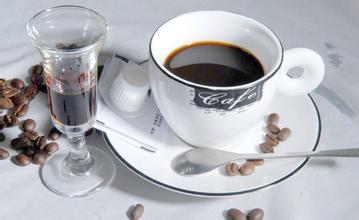Description of Mexican Coffee Flavor introduction to the taste characteristics of fine coffee beans
As early as 1796, coffee spread from Cuba to the Cordoba region of Veracruz, Mexico. After more than 200 years of development, today's Mexican coffee has many different styles of coffee. At present, there are three world-famous coffee producing areas, namely Chiapas, Veracruz and Oaxaca, where 70% of Mexican coffee comes from.
Mexicans are enthusiastic and optimistic, and the chocolates in Mexican coffee perfectly reflect this. There are different methods of Mexican coffee, but the main difference is whether it contains alcohol or not. let's first introduce the practice of non-alcohol.
First, we should seek financial support from the government and set up a "coffee trust fund" to help coffee growers with difficulties tide over their cash flow difficulties.
Second, vigorously develop high-quality coffee, increase the added value of coffee exports, and make up for the losses caused by the fall in coffee prices. Its main approach is to focus on the cultivation of high-quality coffee from 1000 meters to 1500 meters above sea level, prohibit the collection of immature coffee beans, strengthen the screening of coffee beans, and pay attention to the environmental protection ingredients during planting and processing.
From 2002 to 2003, Colombia produced 3 million packets of coffee (60 kg each) and exported 1.87 million packets of coffee. 40% of the coffee exported is high-quality refined coffee, which is known internationally as "GOURMET coffee". In the international market, refined coffee costs an average of US $93.61 per bag (46kg) (FOB), which is US $19.56 higher than that of ordinary coffee. I also have a kind of refined coffee, which sells for $800 a bag.
The main competitors for high-quality coffee in Colombia are Kenya, Guatemala and Ethiopia. Coffee production in Brazil and Vietnam is mainly in quantity, which is not enough to pose a threat to high-quality coffee in Colombia. In the next five years, my country plans to increase the export volume of high-quality coffee to 70% of all exported coffee.
Third, strengthen the export of high-quality coffee to Europe, the United States, Japan and other countries. European and American countries have high living standards, high consumption levels and high requirements for the quality of coffee. A cup of high-quality coffee can sell for $3.25 in Europe and the United States. My brother launched a strong publicity campaign for the European, American and Japanese markets. The offensive has spread to Russia. China has also been included in the future market for Colombian coffee.
Fourth, increase domestic coffee consumption and expand the domestic market. The survey found that there is very little coffee consumption in these coffee-producing countries, whether in Brazil, Colombia, Vietnam and Costa Rica. To this end, the Colombian coffee authorities are prepared to strengthen the development of the domestic consumer market and increase the publicity and sales of domestic coffee products while opening up foreign markets, so as to create a good space for the further development of the coffee industry. The aromas of chocolate and cinnamon blend together to give off the smell of desert. Tasting such a cup of coffee, you seem to be walking through the gray-green cactus in the Mexican desert.
The most famous alcoholic drink in Mexico is tequila (Tequila). When Mexicans drink tequila, they lick a little salt on the tip of their tongue and then swallow the wine in a small glass. Tequila is a strong wine, the Mexican coffee made by adding this wine is very good, if you have enough courage, you might as well give it a try.
Tequila Mexican coffee and non-alcoholic Mexican coffee is basically true, but first pour a small cup of tequila at the bottom of the cup, and then pour in milk and coffee, preferably decorated with cream and cinnamon

Important Notice :
前街咖啡 FrontStreet Coffee has moved to new addredd:
FrontStreet Coffee Address: 315,Donghua East Road,GuangZhou
Tel:020 38364473
- Prev

Introduction to the characteristics of the grinding degree of varieties describing the flavor of Costa Rican Yerzaro coffee
First, we should seek financial support from the government and set up a coffee trust fund to help coffee growers with difficulties tide over their cash flow difficulties. Second, vigorously develop high-quality coffee, increase the added value of coffee exports, and make up for the losses caused by the fall in coffee prices. The main approach is to focus on the cultivation of high-quality coffee from 1000 meters to 1500 meters above sea level, and to prohibit the collection of immature coffee.
- Next

Description of Flavor of Dominica Coffee with Fruit Flavor introduction to the degree of Baking of varieties treated with Grinding degree
The Baez regime was overthrown in 1874, but was elected president two years later and finally stepped down in 1878. General Ulysses Errou came to power in 1882, which gradually stabilized the political situation in Dominica, which had been uneasy for many years. During the reign of President Errou, the political stability gave many countries a respite, and the continuous improvement of sugar industry technology resulted in many European countries.
Related
- Detailed explanation of Jadeite planting Land in Panamanian Jadeite Manor introduction to the grading system of Jadeite competitive bidding, Red bid, Green bid and Rose Summer
- Story of Coffee planting in Brenka region of Costa Rica Stonehenge Manor anaerobic heavy honey treatment of flavor mouth
- What's on the barrel of Blue Mountain Coffee beans?
- Can American coffee also pull flowers? How to use hot American style to pull out a good-looking pattern?
- Can you make a cold extract with coffee beans? What is the right proportion for cold-extracted coffee formula?
- Indonesian PWN Gold Mandrine Coffee Origin Features Flavor How to Chong? Mandolin coffee is American.
- A brief introduction to the flavor characteristics of Brazilian yellow bourbon coffee beans
- What is the effect of different water quality on the flavor of cold-extracted coffee? What kind of water is best for brewing coffee?
- Why do you think of Rose Summer whenever you mention Panamanian coffee?
- Introduction to the characteristics of authentic blue mountain coffee bean producing areas? What is the CIB Coffee Authority in Jamaica?

